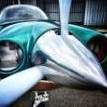Fuel management
-
Members Online
- Rmnpilot
- OR75
- UteM20F
- Fix
- shawnd
- bcg
- natdm
- Shadrach
- Boboli
- Andy95W
- Z W
- titus383
- lanejacobs84
- wivika2537
- Hradec
- Lax291
- hammdo
- 47U
- eman1200
- adventuresaviationllc
- Joseph Long
- dkkim73
- binarycalculus
- LANCECASPER
- wombat
- Marc_B
- Hank
- Sue Bon
- Rsmithref
- GMBrown
- Utah20Gflyer
- 201er
- fmg85
- squawkvfr
- MB65E
- n13951pm
- M20S Driver
- Joe Linnebur
- DanM20C
- philiplane
- Stephan Kablitz
- skykrawler


Recommended Posts
Join the conversation
You can post now and register later. If you have an account, sign in now to post with your account.